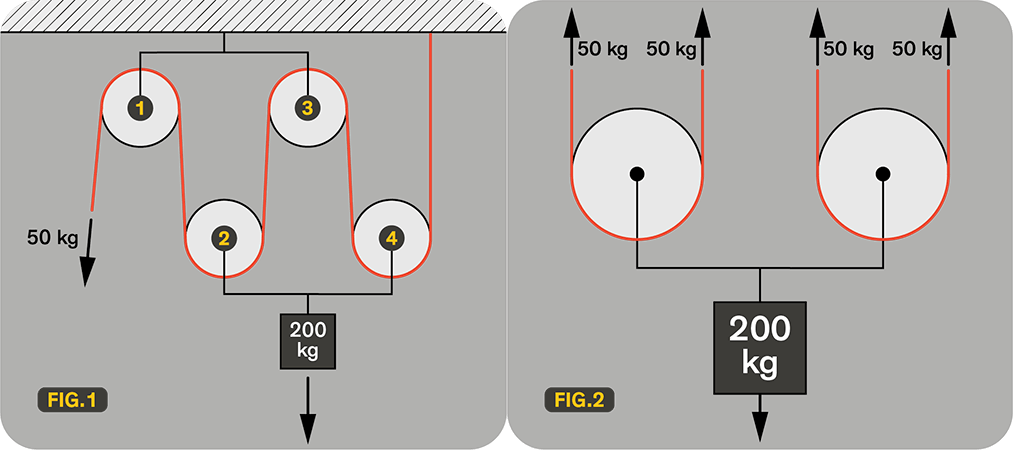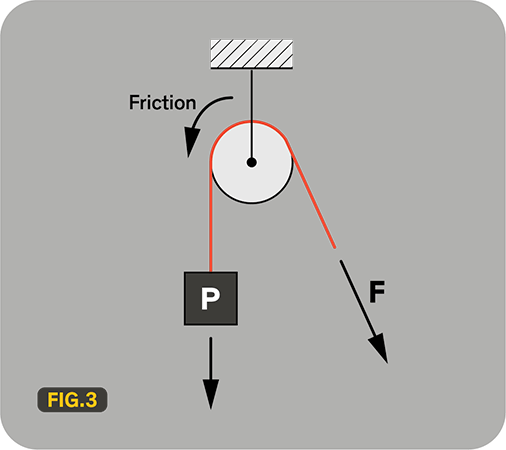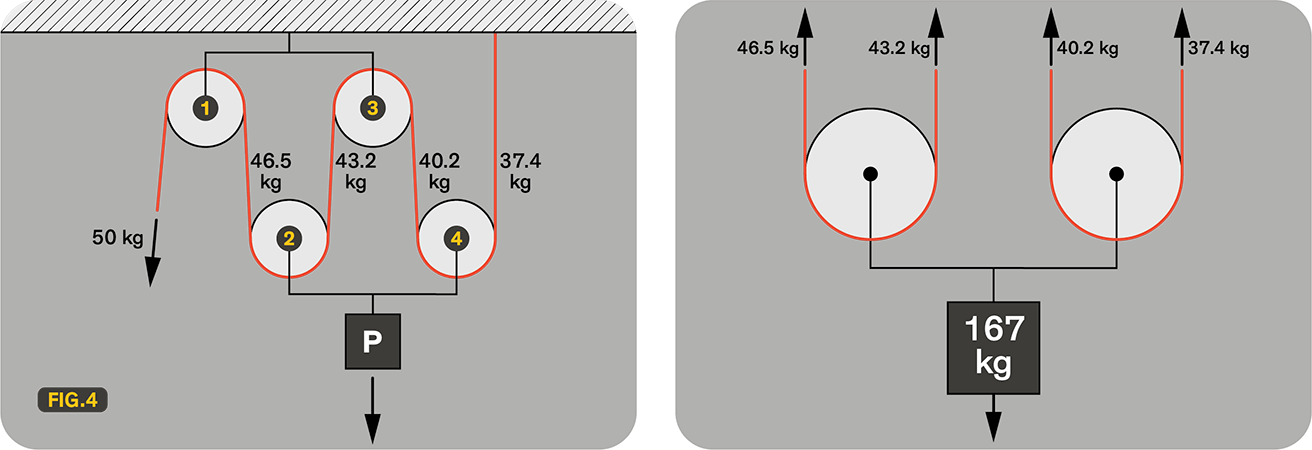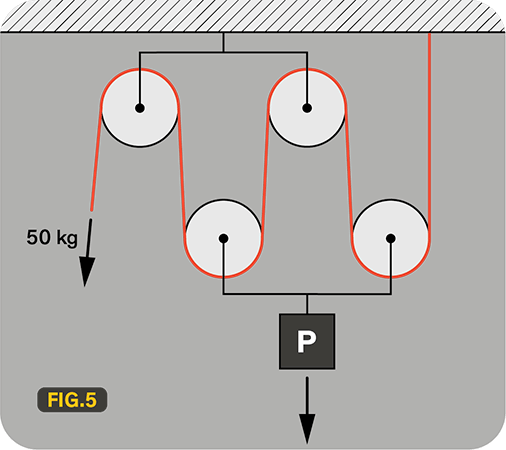Blocks & Tackles
Author: RC / Antal Research & Developement Date Posted:22 February 2021
Blocks & Tackles efficiency
3.1 IDEAL BLOCKS AND TACKLES

A tackle is a system of blocks that amplifies the applied force so to lift heavy loads. For example a 4:1 tackle (FIG.1) amplifies the force by 4 times. It means that appllying a force of 50 kg could lift a load of 4 x 50 = 200 kg. The result (4 x 50 = 200 kg) can be easily understood by observing the FIG.2. So far we considered the ideal block (zero friction). Let's see what happens with the real blocks.
 3.2 BLOCK EFFICIENCY
3.2 BLOCK EFFICIENCY
The following table shows the efficiency value E of 4 different types of blocks and the corresponding value of the lifted load P assuming an applied force F = 50 kg.

Applying a force F = 50 kg to the most efficient block (Roller Bearing Block) I can lift a load P = 46,5 kg, I lose only 50 - 46,5 = 3,5 kg for friction (7% off) while, with the Low Friction Ring, I can lift only 33,5 kg, I lose 50 - 33,5 = 16,5 kg for friction (33% off).
This loss becomes greater in complex systems with many blocks with losses that gradually add up with each new block passage.
Consider again the Roller Bearing Block with and efficiency E = 0,93 that loses 7% with each block passage and see what happens in the 4:1 system already described in paragraph 3.1.

 3.3 TACKLE EFFICIENCY WITH DIFFERENT TYPES OF BLOCKS
3.3 TACKLE EFFICIENCY WITH DIFFERENT TYPES OF BLOCKS
We saw in the previous paragraph that with a 4:1 Roller Bearing Block system and with an applied force F = 50 kg we can lift 167 kg and not the 200 kg of the ideal system, it means a Tackle Efficency = 167 / 200 = 0,84.

